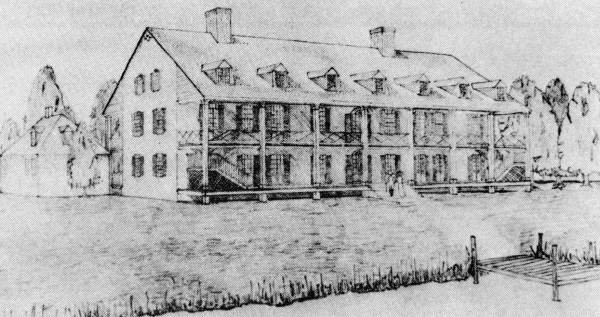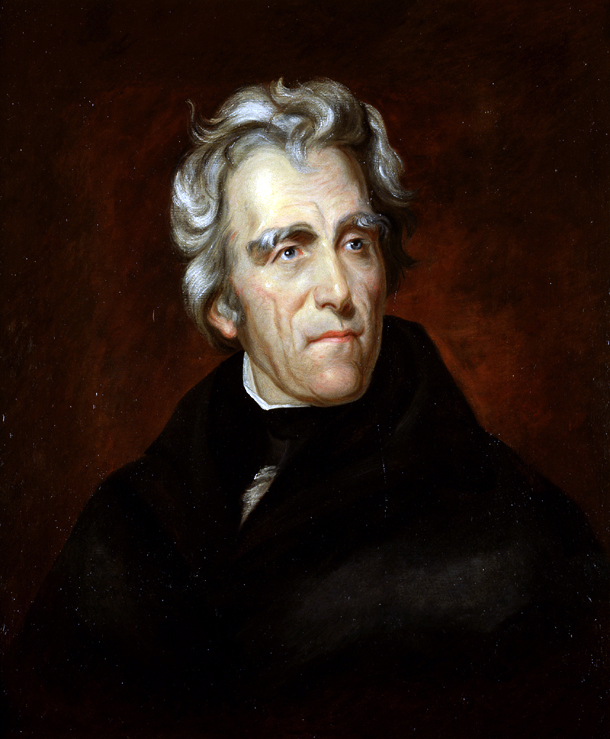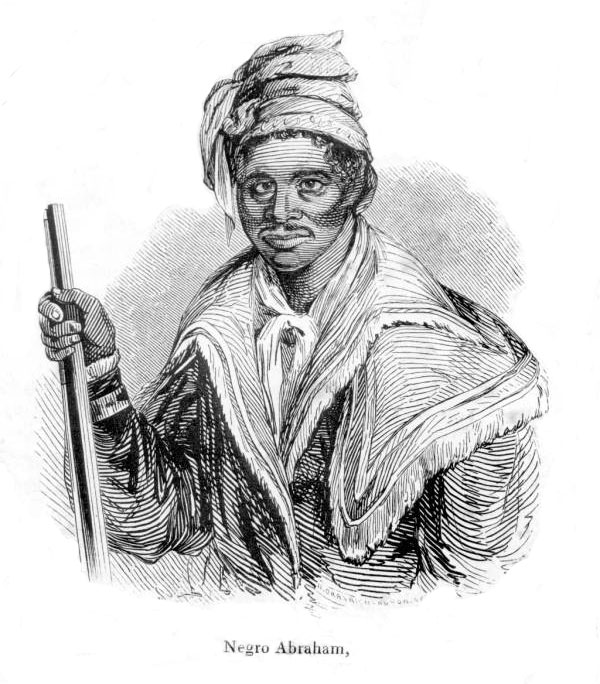|
Francis Philip Fatio
Francis Philip Fatio (''Spanish'' Francisco Phelipe Fatio) (1724-1811), born in Switzerland, was a soldier for France, a viscount in Sardinia, a merchant in London, and a prominent planter in East Florida during both the British period and the second Spanish period. Francis Philip Fatio was born in 1724 in Vevey, Switzerland. He joined the Swiss Guard, and fought for France in the War of Austrian Succession. He later moved to the Kingdom of Sardinia, his wife's native land, where he was made a viscount. In 1759 Fatio joined his brother in commerce in London.Parker (1988). 46. British period in East Florida In 1769 Francis Fatio invested with two partners, Thomas Dunnage and John Francis Rivas, in plantations in East Florida. In 1771 Francis Fatio moved with his family to East Florida to become the managing partner of New Castle Plantation, which specialized in producing indigo. New Castle Plantation was located on the St. Johns River in what is now the Arlington neighborhood of ... [...More Info...] [...Related Items...] OR: [Wikipedia] [Google] [Baidu] |
Vevey
Vevey (; frp, Vevê; german: label=former German, Vivis) is a town in Switzerland in the canton of Vaud, on the north shore of Lake Geneva, near Lausanne. The German name Vivis is no longer commonly used. It was the seat of the district of the same name until 2006, and is now part of the Riviera-Pays-d'Enhaut District. It is part of the French-speaking area of Switzerland. Vevey is home to the world headquarters of the international food and beverage company Nestlé, founded here in 1867. Milk chocolate was invented in Vevey by Daniel Peter in 1875, with the aid of Henri Nestlé. The English actor and comedian Charlie Chaplin resided in Vevey from 1952 until his death in 1977. History A piloti settlement existed here as early as the 2nd millennium BC. Under Rome, it was known as Viviscus or ''Vibiscum''. It was mentioned for the first time by the ancient Greek astronomer and philosopher Ptolemy, who gave it the name Ouikos. In the Middle Ages it was a station on the Via ... [...More Info...] [...Related Items...] OR: [Wikipedia] [Google] [Baidu] |
Panton, Leslie & Company
Panton, Leslie & Company was a company of Scottish merchants active in trading in the Bahamas and with the Native Americans of what is now the Southeastern United States during the late 18th and early 19th centuries. The origins of Panton, Leslie & Company are in the firm Moore and Panton, in Savannah, Georgia, of which William Panton became a partner in 1774. In 1775, the British, who had acquired Florida by the terms of the Treaty of Paris in 1763, chose him to do their trading with the Creeks. He then joined with John Forbes to create Panton and Forbes. Politically, Panton was a loyalist; he was not in favor of American independence. When Britain in 1783 accepted American independence, he had to leave the country, and his property in the United States was confiscated. As a new base for trading with the Native Americans he chose Florida, which was just completing 20 years as a British colony. Its capital, St. Augustine, was not far from Savannah. Panton, Leslie, & Company ... [...More Info...] [...Related Items...] OR: [Wikipedia] [Google] [Baidu] |
Plantation Owners
A plantation is an agricultural estate, generally centered on a plantation house, meant for farming that specializes in cash crops, usually mainly planted with a single crop, with perhaps ancillary areas for vegetables for eating and so on. The crops that are grown include cotton, coffee, tea, cocoa, sugar cane, opium, sisal, oil seeds, oil palms, fruits, rubber trees and forest trees. Protectionist policies and natural comparative advantage have sometimes contributed to determining where plantations are located. In modern use the term is usually taken to refer only to large-scale estates, but in earlier periods, before about 1800, it was the usual term for a farm of any size in the southern parts of British North America, with, as Noah Webster noted, "farm" becoming the usual term from about Maryland northwards. It was used in most British colonies, but very rarely in the United Kingdom itself in this sense. There, as also in America, it was used mainly for tree plantations, a ... [...More Info...] [...Related Items...] OR: [Wikipedia] [Google] [Baidu] |
People Of Colonial Florida
A person (plural, : people) is a being that has certain capacities or attributes such as reason, morality, consciousness or self-consciousness, and being a part of a culturally established form of social relations such as kinship, ownership of property, or legal obligation, legal responsibility. The defining features of personhood and, consequently, what makes a person count as a person, differ widely among cultures and contexts. In addition to the question of personhood, of what makes a being count as a person to begin with, there are further questions about personal identity and self: both about what makes any particular person that particular person instead of another, and about what makes a person at one time the same person as they were or will be at another time despite any intervening changes. The plural form "people" is often used to refer to an entire nation or ethnic group (as in "a people"), and this was the original meaning of the word; it subsequently acquired its us ... [...More Info...] [...Related Items...] OR: [Wikipedia] [Google] [Baidu] |
List Of Governors Of Florida
The governor of Florida is the head of government of the state of Florida and the commander-in-chief of the state's military forces. The governor has a duty to enforce state laws and the power to either approve or veto bills passed by the Florida Legislature, to convene the legislature and grant pardons, except in cases of impeachment. When Florida was first acquired by the United States, future president Andrew Jackson served as its military governor. Florida Territory was established in 1822 and five people served as governor over 6 distinct terms. The first territorial governor, William Pope Duval, served 12 years, the longest of any Florida governor to date. Since statehood in 1845, there have been 45 people who have served as governor, one of whom served two distinct terms. Four state governors have served two full four-year terms: William D. Bloxham, in two stints, as well as Reubin Askew, Jeb Bush and Rick Scott who each served their terms consecutively. Bob Graham alm ... [...More Info...] [...Related Items...] OR: [Wikipedia] [Google] [Baidu] |
Francis P
Francis may refer to: People *Pope Francis, the head of the Catholic Church and sovereign of the Vatican City State and Bishop of Rome *Francis (given name), including a list of people and fictional characters *Francis (surname) Places * Rural Municipality of Francis No. 127, Saskatchewan, Canada * Francis, Saskatchewan, Canada **Francis (electoral district) * Francis, Nebraska *Francis Township, Holt County, Nebraska * Francis, Oklahoma *Francis, Utah Other uses * ''Francis'' (film), the first of a series of comedies featuring Francis the Talking Mule, voiced by Chill Wills *''Francis'', a 1983 play by Julian Mitchell *FRANCIS, a bibliographic database * ''Francis'' (1793), a colonial schooner in Australia *Francis turbine, a type of water turbine *Francis (band), a Sweden-based folk band * Francis, a character played by YouTuber Boogie2988 See also *Saint Francis (other) *Francies, a surname, including a list of people with the name *Francisco (other) *Franci ... [...More Info...] [...Related Items...] OR: [Wikipedia] [Google] [Baidu] |
Ximenez-Fatio House
Ximenez-Fatio House Museum is one of the best-preserved and most authentic Second Spanish Period (1783-1821) residential buildings in St. Augustine, Florida. In 1973, it was added to the National Register of Historic Places. It was designated a Florida Heritage Landmark in 2012. The museum complex sits just south of the city's central Plaza de la Constitución at 20 Aviles Street (formerly Hospital Street), the oldest archaeologically documented street in the United States. It is located at the center of Old Town, the city's oldest continuously occupied community. Since 1939, the property has been privately owned and managed by The National Society of The Colonial Dames of America in The State of Florida (NSCDA-FL). Through their efforts, it was restored and interpreted to reflect its function as a fashionable boarding house during Florida's first tourist boom, which began after 1821. The property is a historic house museum, furnished and presented to tell stories of the v ... [...More Info...] [...Related Items...] OR: [Wikipedia] [Google] [Baidu] |
Seminole Wars
The Seminole Wars (also known as the Florida Wars) were three related military conflicts in Geography of Florida, Florida between the United States and the Seminole, citizens of a Native Americans in the United States, Native American nation which formed in the region during the early 1700s. Hostilities commenced about 1816 and continued through 1858, with two periods of uneasy truce between active conflict. The Seminole Wars were the longest and most expensive, in both human and financial cost to the United States, of the American Indian Wars. Overview First Seminole War The First Seminole War (1817-1818)-"Beginning in the 1730's, the Spaniards had given refuge to runaway slaves from the Carolinas, but as late as 1774 Fugitive slaves in the United States, Negroes [did] not appear to have been living among the Florida Indians." After that latter date more runaway slaves began arriving from American plantations, especially congregating around "Negro Fort on the Apalachicola Riv ... [...More Info...] [...Related Items...] OR: [Wikipedia] [Google] [Baidu] |
Vicente Manuel De Céspedes
Vicente Manuel de Céspedes (1721?-1794),Cahoon, Ben also known as Vicente Manuel de Zéspedes, was a Spanish colonel and field marshal in the Spanish Royal Army who served as governor of Santiago de Cuba (1781-1782) and the Spanish province of East Florida (1784-1790). Early life Vicente Manuel de Céspedes y Velasco was born in Valencia, Spain,Miguel Isamat, Aurelio José (2009)Capellanía de San Miguel De Jiquiabo(In Spanish: Chaplaincy of San Miguel De Jiquiabo). Anarchists of Catalonia. Page 5. probably in 1721. His paternal grandfather, José de Céspedes, was a lieutenant general in the Spanish Royal Army and Governor of Rosalcazár in Oran, (Algeria), and his maternal grandfather, Martín Arostegui Larrea, was a Knight of Santiago (1750) in Spain. He joined the Spanish Royal Army in his youth, attaining the rank of colonelAmores Carredano, Juan Bosco (1998)La Capitanía General de Cuba y la defensa de Luisiana y Florida ante el expansionismo norteamericano (1783-1789)(in ... [...More Info...] [...Related Items...] OR: [Wikipedia] [Google] [Baidu] |
Black Seminoles
The Black Seminoles, or Afro-Seminoles are Native American-Africans associated with the Seminole people in Florida and Oklahoma. They are mostly blood descendants of the Seminole people, free Africans, and escaped slaves, who allied with Seminole groups in Spanish Florida. Many have Seminole lineage, but due to the stigma of having very dark or brown skin and kinky hair, they all have been categorized as slaves or freedmen. Historically, the Black Seminoles lived mostly in distinct bands near the Native American Seminole. Some were held as slaves, particularly of Seminole leaders, but the Black Seminole had more freedom than did slaves held by whites in the South and by other Native American tribes, including the right to bear arms. Today, Black Seminole descendants live primarily in rural communities around the Seminole Nation of Oklahoma. Its two Freedmen's bands, the Caesar Bruner Band and the Dosar Barkus Band, are represented on the General Council of the Nation. Other cent ... [...More Info...] [...Related Items...] OR: [Wikipedia] [Google] [Baidu] |
East Florida
East Florida ( es, Florida Oriental) was a colony of Great Britain from 1763 to 1783 and a province of Spanish Florida from 1783 to 1821. Great Britain gained control of the long-established Spanish colony of ''La Florida'' in 1763 as part of the treaty ending the French and Indian War (as the Seven Years' War was called in North America). Deciding that the territory was too large to administer as a single unit, Britain divided Florida into two colonies separated by the Apalachicola River: East Florida with its capital in St. Augustine and West Florida with its capital in Pensacola. East Florida was much larger and comprised the bulk of the former Spanish territory of Florida and most of the current state of Florida. It had also been the most populated region of Spanish Florida, but before control was transferred to Britain, most residents – including virtually everyone in St. Augustine – left the territory, with most migrating to Cuba. Britain tried to attract settlers to ... [...More Info...] [...Related Items...] OR: [Wikipedia] [Google] [Baidu] |
Louis Pacheco
Louis (Luis) Fatio Pacheco (December 26, 1800 – ?) was an Afro-Spanish enslaved person who became known in 19th century Spanish Florida for his connection to the Black Seminole community. Biography Early life and career Pacheco was born December 26,1800 in New Switzerland on the plantation of Francis Philip Fatio Sr.—an associate and possibly a partner in Panton, Leslie, & Company. Pacheco's father Adam was a skilled slave working a lot with his hands as a carpenter, building boats, and driver. He was also noted to be a "very intelligent and ambitious man." With Pacheco's father working as a sought after slave, Pacheco received some privilege's allowing him to learn how to read and write. This is where he skill for learning multiple languages developed by the time he reached adulthood he knew French, Spanish, and English. Pacheco learned the Seminole language from his brother who was kidnapped by the Indians but was later returned to the plantation. In 1811 Francis Fat ... [...More Info...] [...Related Items...] OR: [Wikipedia] [Google] [Baidu] |



_1938.jpg)




